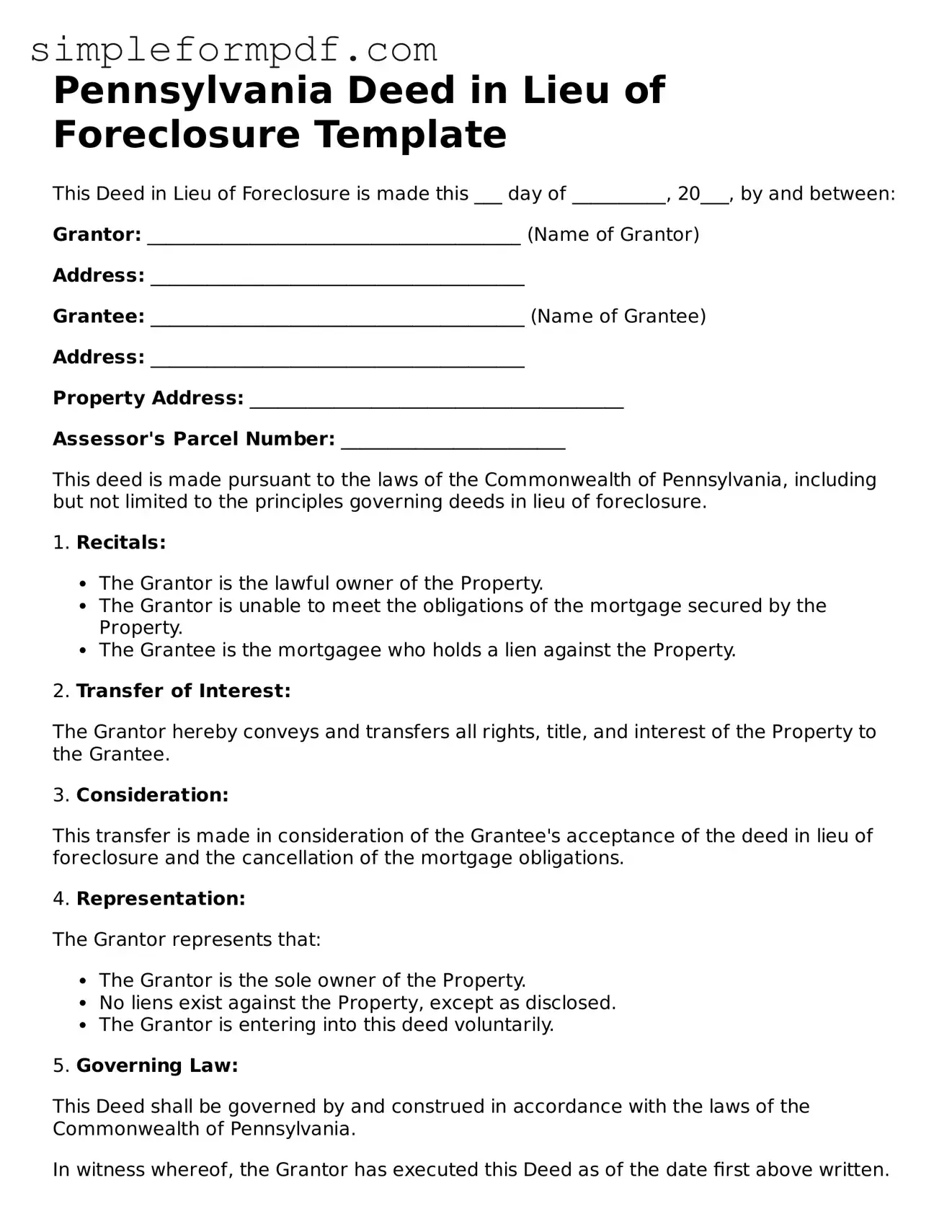Pennsylvania Deed in Lieu of Foreclosure Template
This Deed in Lieu of Foreclosure is made this ___ day of __________, 20___, by and between:
Grantor: ________________________________________ (Name of Grantor)
Address: ________________________________________
Grantee: ________________________________________ (Name of Grantee)
Address: ________________________________________
Property Address: ________________________________________
Assessor's Parcel Number: ________________________
This deed is made pursuant to the laws of the Commonwealth of Pennsylvania, including but not limited to the principles governing deeds in lieu of foreclosure.
1. Recitals:
- The Grantor is the lawful owner of the Property.
- The Grantor is unable to meet the obligations of the mortgage secured by the Property.
- The Grantee is the mortgagee who holds a lien against the Property.
2. Transfer of Interest:
The Grantor hereby conveys and transfers all rights, title, and interest of the Property to the Grantee.
3. Consideration:
This transfer is made in consideration of the Grantee's acceptance of the deed in lieu of foreclosure and the cancellation of the mortgage obligations.
4. Representation:
The Grantor represents that:
- The Grantor is the sole owner of the Property.
- No liens exist against the Property, except as disclosed.
- The Grantor is entering into this deed voluntarily.
5. Governing Law:
This Deed shall be governed by and construed in accordance with the laws of the Commonwealth of Pennsylvania.
In witness whereof, the Grantor has executed this Deed as of the date first above written.
______________________ Grantor's Signature
______________________ Printed Name of Grantor
______________________ Grantee's Signature
______________________ Printed Name of Grantee
Witnessed by:
______________________ Signature of Witness
______________________ Printed Name of Witness
State of Pennsylvania
County of ________________________
On this ___ day of __________, 20___, before me, a Notary Public in and for said State and County, personally appeared ________________________ (Grantor) known to me to be the person described in and who executed the foregoing Deed, and acknowledged that he/she executed the same for the purposes therein contained.
______________________ Notary Public
My Commission Expires: ____________
